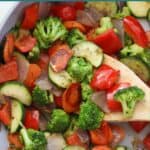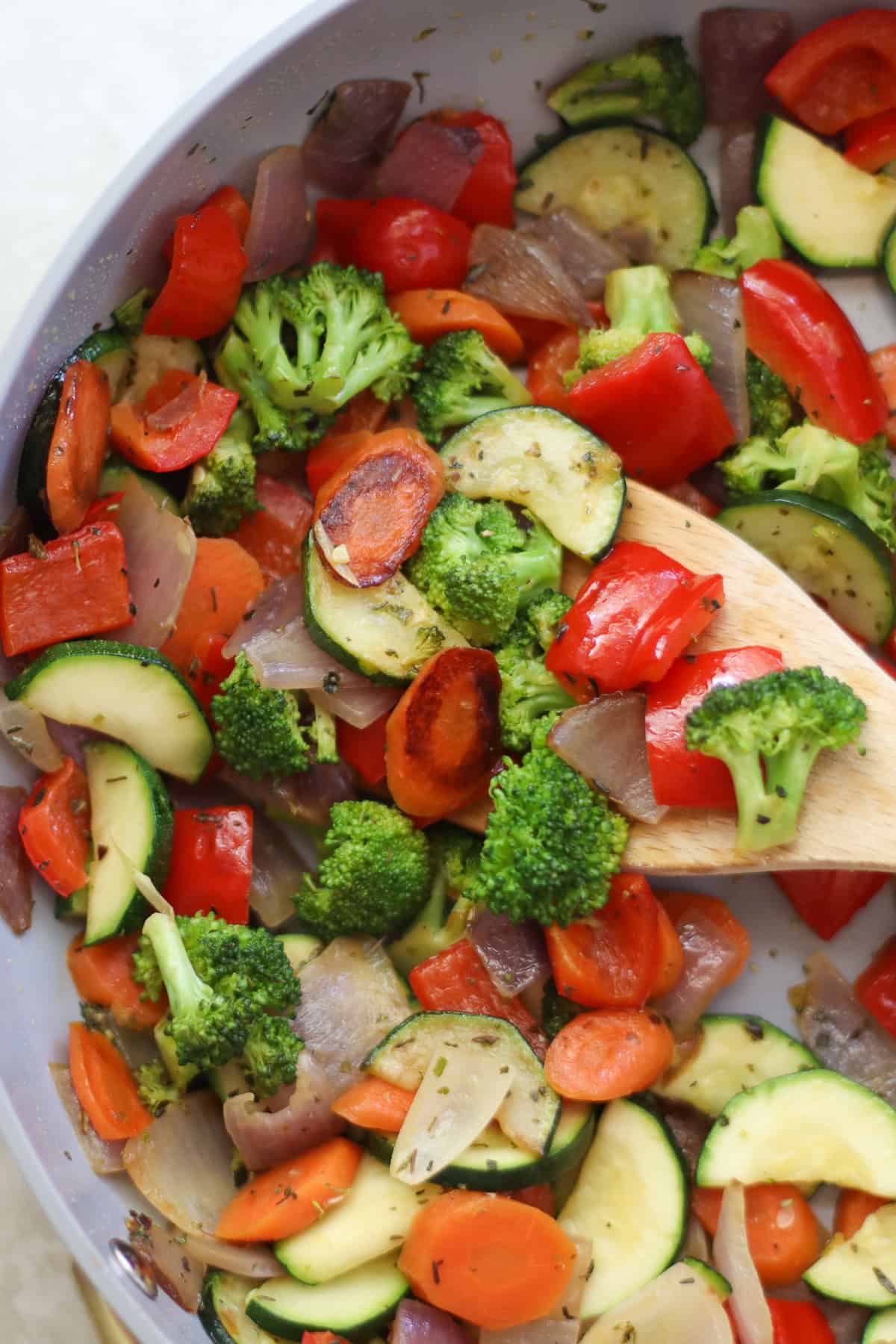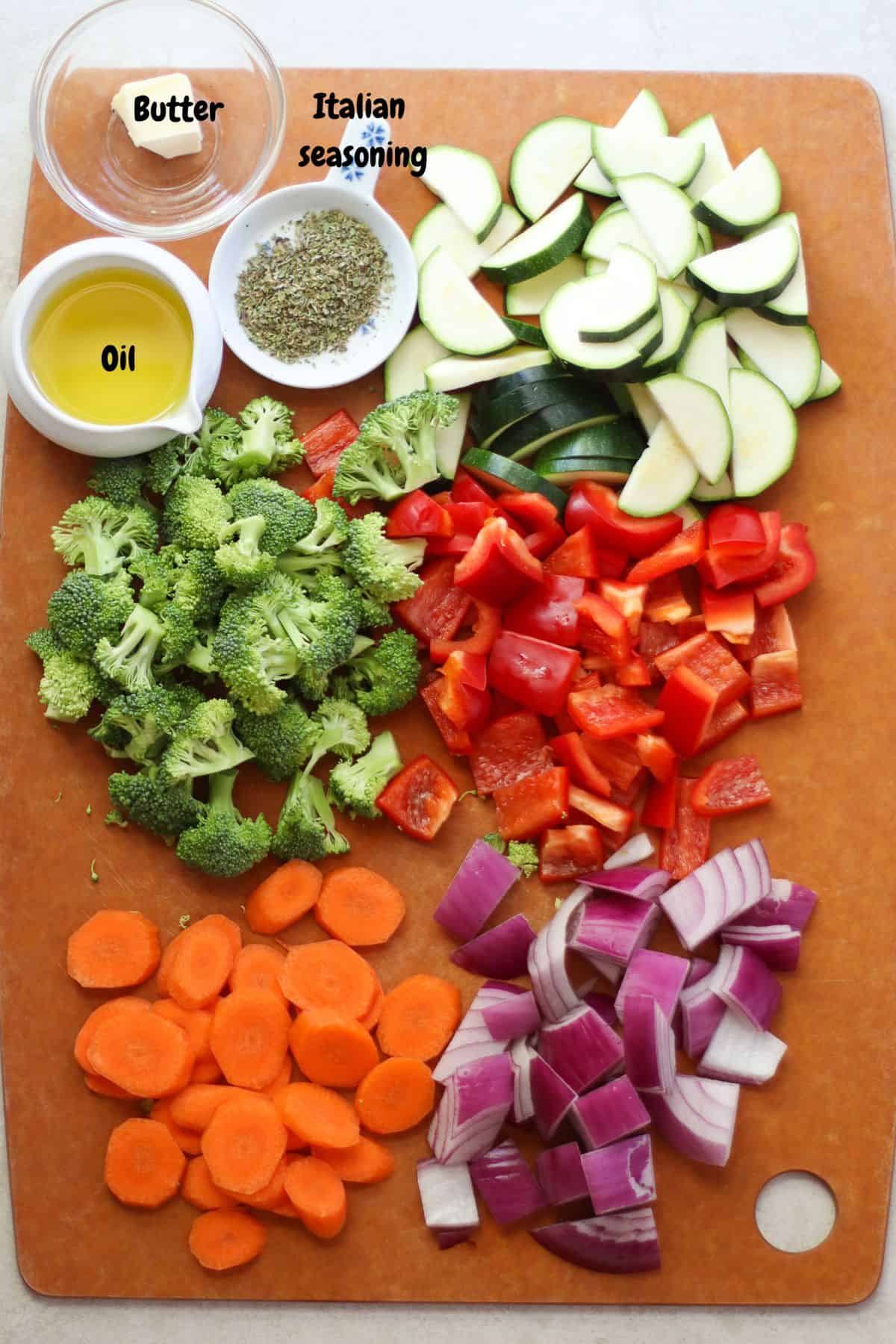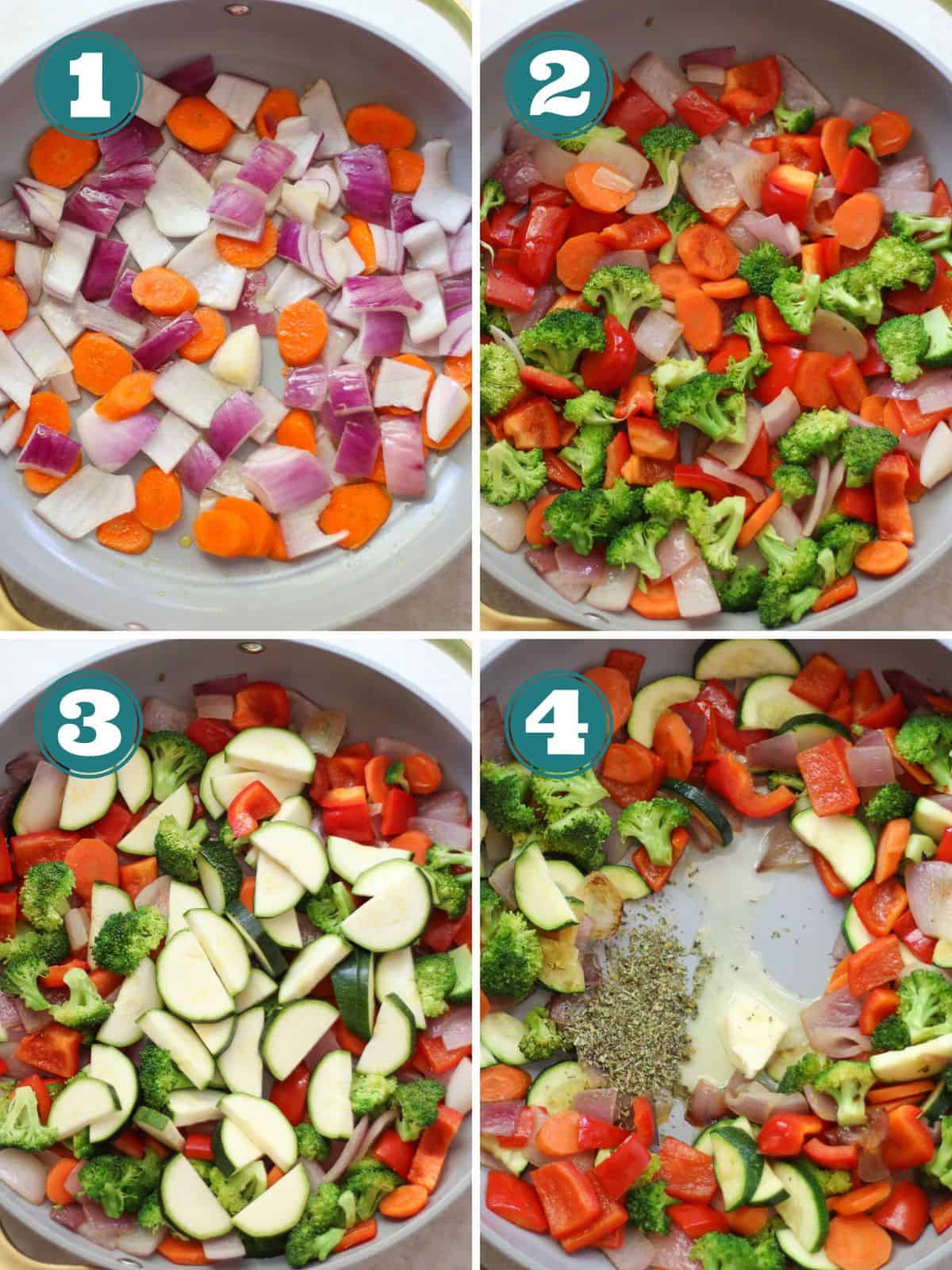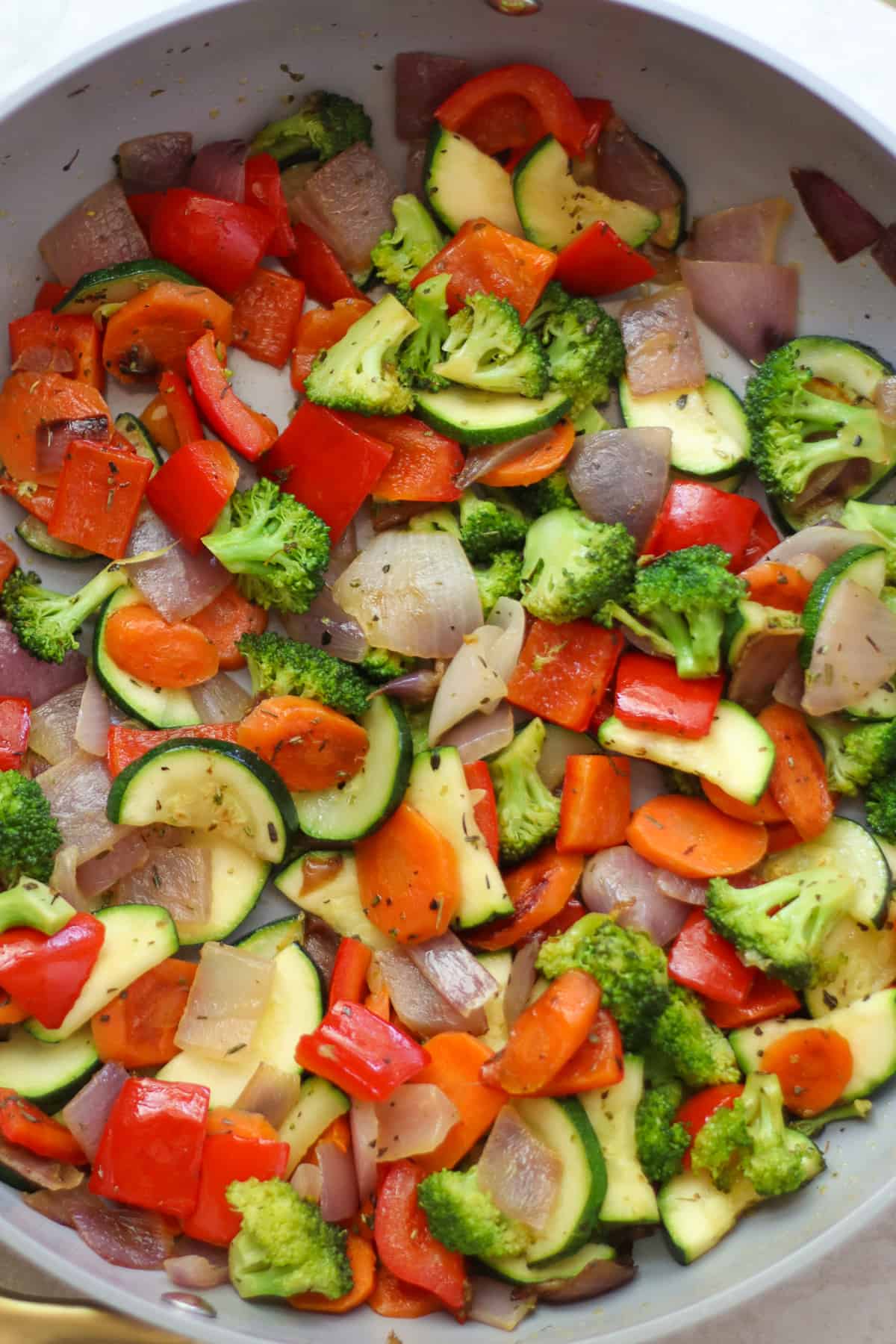Simple Sauteed Vegetables
If you are in need of quick and efficient ways to invite a wide range of colorful and nutrient-packed vegetables into your family’s meals, you’re going to love sauteed vegetables! While there are important techniques and tips to be aware of, the cooking process is super simple! The word saute is derived from the frech verb “sauter,” which means “to jump.” And the cooking technique of sauteeing refers to the method of quickly cooking small pieces of food in a hot pan with some oil or fat, allowing the ingredients to jump in the pan as they are stirred or tossed. It’s a quick and simple way to cook vegetables while preserving their natural flavors, textures, and nutrition. Now let’s dive in, shall we?
Ingredients
For this recipe, these are the vegetables I’m using. Feel free to swap with whatever you wish.
Carrots Red onion Broccoli Red bell pepper Mushrooms Zucchini Oil Butter – you can also use ghee Seasonings – Here are some delicious vegetable and herb/spice pairings
How to Saute Vegetables
Best Vegetables Options
When it comes to sautéing vegetables in a pan, there are several options that work well together due to their flavors, textures, and cooking times. Here are some of the best options, and I’ve categorized them according to how quickly they cook. This chart will come in handy for when you are cooking different vegetables in the same pan. You want to make sure to add the ones with the longest cooking times FIRST. Otherwise, you will end up with beautifully cooked carrots and mushy zucchini, for example.
Short Cooking Time (3-5 minutes)
Asparagus Corn Zucchini Yellow squash Frozen peas Mushrooms Leafy greens
Medium Cooking Time (7-10 minutes)
Bell peppers Broccoli Brussels sprouts Cauliflower Green beans
Longer Cooking Time (10+ minutes)
Carrots Onions Potatoes Sweet potatoes
How to Season Sauteed Vegetables
While salt and black pepper are a classic, here are some easy ways to flavor your vegetables!
Garlic – can use minced garlic or garlic powder Smoked paprika Red pepper flakes Italian seasoning Taco seasoning Curry powder Fresh herbs – basil, parsley, thyme, rosemary, oregano (dried will work too) Lemon or lime juice – try grating a little zest over the top even! A splash of soy sauce or coconut aminos Sesame oil Balsamic vinegar Freshly grated parmesan cheese
Tips for Success
Don’t overcrowd the pan. Use a large pan and make sure the vegetables aren’t placed on top of each other, which will create steam, making them soggy. Cook in two batches, if needed. If using vegetables with the longest cooking times, add them first to the pan and cover with a lid to help them cook faster. Stir occasionally, not constantly. This will prevent the vegetables from browning properly. You don’t have to adhere strictly to the cooking times provided. Once the vegetables look done, taste it. If it’s still too crunchy, cook a little longer. Season your vegetables at the end, especially salt, as it draws out moisture from the vegetables, making them soggy.
Serving Suggestions
Sauteed vegetables are an easy and healthy side dish, but you can serve as a main course along with a protein and carbohydrate. It’s perfect for busy weeknights!
Protein
Beans Beef Chicken Chicken nuggets Turkey meatballs Roasted turkey breast Shrimp Baked salmon balls Tofu – try this miso tofu
Carbohydrates
Multigrain rice Quinoa Cashew sauce pasta Hulk pasta Broccoli pesto pasta Protein pizza Pumpkin risotto
Equipment
When it comes to sauteing vegetables, the best pan to use is one that promotes even heat distribution, has a wide cooking surface, and allows for easy tossing and stirring. Here are my top picks:
Non-stick pan – these are convenient, requires less oil, and makes it easier to toss the vegetables without sticking. Look for high-quality non-toxic pan (what you see pictured here). Stainless steel pan Cast iron skillet Carbon steel pan – these are similar to cast iron but are lighter and heat up quickly. I actually prefer this pan over cast iron.
Storage Suggestions
Cool completely as placing hot vegetables directly in the refrigerator can create condensation and lead to sogginess. Transfer to an airtight container and refrigerate for 3-4 days. When reheating the vegetables, use gentle heat to maintain their texture. We also don’t mind eating them cold. My kids love the leftovers in their school lunch boxes. Did you make this recipe? Leave a rating below and let me know how you liked the recipe! Your feedback means so much to me!
